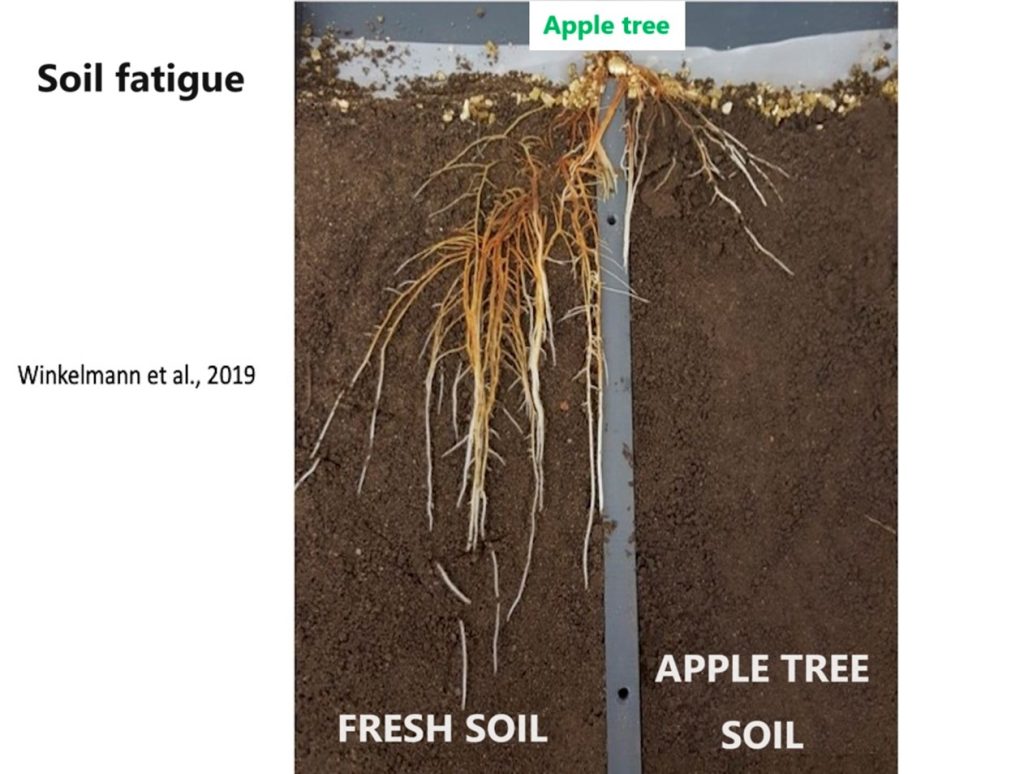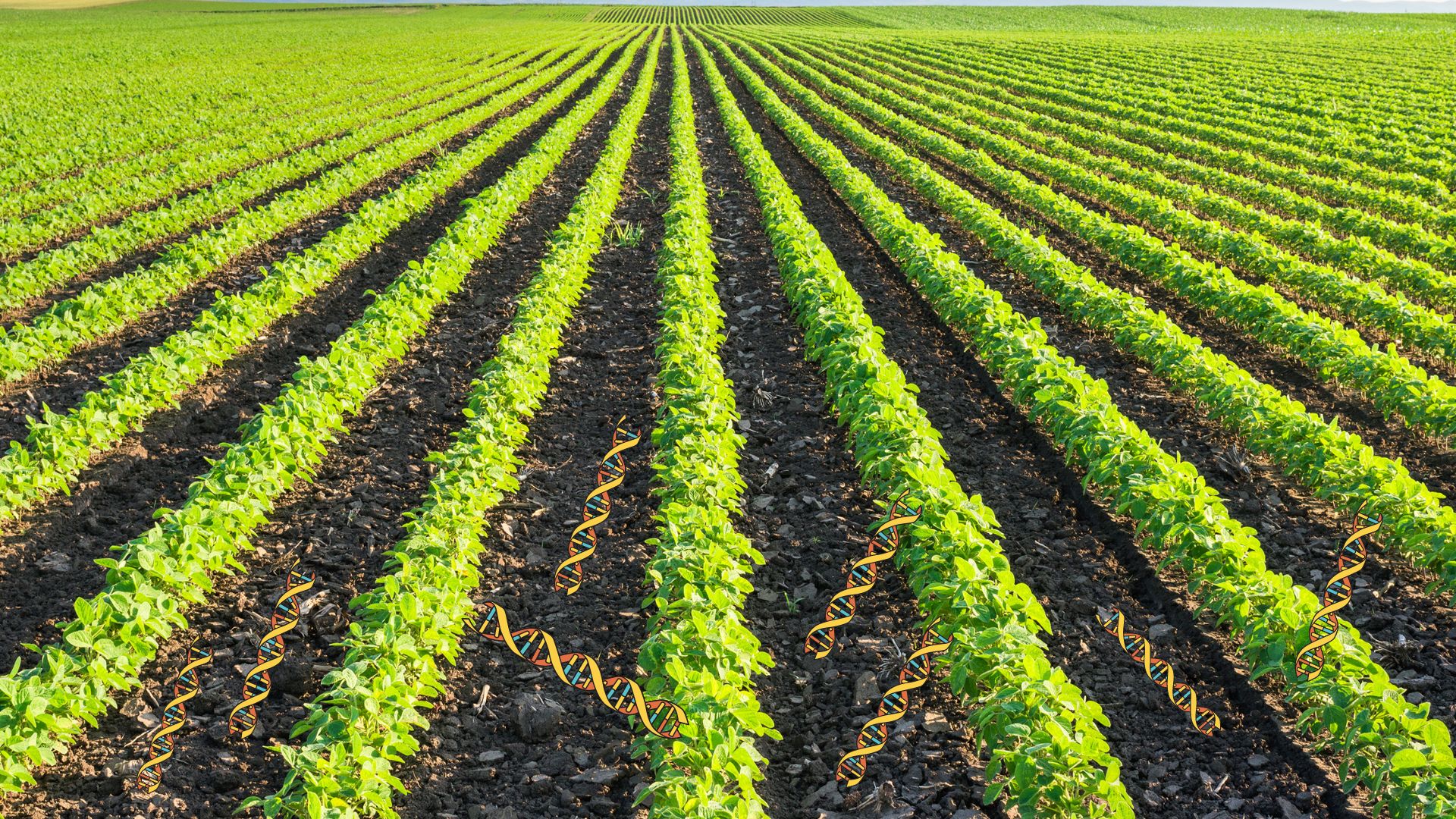How monoculture can cause self-toxicity and soil fatigue: Risks, control and benefits for agriculture
When the same crop is grown for a long time on the same soil, its DNA (self) accumulates in the soil, and this causes autotoxicity and the onset of tiredness.
A recent discovery attributes a new function to DNA that is particularly linked to the coexistence of plant species in nature. This discovery has several practical implications for agriculture.
In simple terms, when parts of a plant fall to the ground and decompose, they release the DNA of that species into the soil. This DNA, when there is a lot of it, exerts a species-specific inhibitory effect on individuals of the same species. In other words, plants of the same species struggle to grow in that soil.
The inhibitory effect of self-DNA has also been verified in other organisms, such as bacteria, fungi, protozoa, algae, and insects, suggesting that it is a general biological phenomenon, most likely valid even for humans.
This is the theory of self-toxicity, whereby extracellular fragmented self DNA (i.e., DNA from conspecifics) produces species-specific inhibitory effects in plants.
This is a mechanism at the base of soil fatigue, a negative phenomenon for agriculture, almost invisible but one of the most important because it can severely damage the development and profitability of a crop.
The exact mechanisms of self-toxicity are still being investigated: when a plant comes into contact with its own DNA, it may perceive this as a threat and trigger a response that can inhibit growth and development. However, the specific molecules and signaling pathways involved are not fully understood.
Self-toxicity and its negative consequences are particularly evident when the same crop is grown for a long time on the same soil, i.e., when monoculture is practiced. These consequences of course, vary depending on several factors, such as:
- soil type,
- microbial activity,
- plant species,
- DNA fragment size
To different extents, there is a strong accumulation of conspecific DNA (of the same species), an imbalance in the soil-plant system, and a consequent decline in production; plants are weaker and more susceptible to diseases.
New discoveries also lead to new practical solutions: by applying the theory of self DNA in agriculture to the world of biocontrol, the DNA of a parasitic or pathogenic species such as weeds can be used to inhibit its own development.


Conceptual representation of the use of self DNA for biological control and examples of potential practical applications (Source: Phytochemistry Reviews)
How to prevent plant self-toxicity
In crop farming, there are different ways to prevent self-toxicity and reduced crop outputs, i.e., sustainable agricultural practices including:
- crop rotation,
- use of resistant varieties,
- minimum tillage,
- intercropping,
- precision agriculture
- application of organic amendments.
All these countermeasures help mitigate soil fatigue without relying solely on self-toxicity-based solutions.
Self-toxicity is a significant contributor to soil fatigue. Still, other factors like nutrient depletion, microbial imbalance, and allelopathy (when an organism produces biochemicals that affect the growth, survival, and reproduction of other organisms.) also play a role. Therefore, addressing soil fatigue requires a more holistic approach, considering various inputs and practices and tailoring them to our specific farming context.
- Organic matter amendments such as composted manure, cover crops, and other organic materials replenish nutrients and add beneficial microbes, improving soil structure and microbial activity.
- In cases of specific nutrient deficiencies, mineral fertilizers can help restore necessary elements for plant growth.
- Biostimulants such as humic acids, seaweed extracts, and other natural compounds can stimulate plant growth and resilience, making crops more tolerant to stress factors like soil fatigue.
- Microbial inoculants from specific bacteria or fungi strains can enhance soil microbial communities, promoting nutrient cycling and improving plant health. Addressing soil fatigue through microorganisms is a long-term approach that requires careful planning and monitoring. While it may not offer a quick fix, it can contribute to building a more resilient and much healthier productive soil ecosystem in the long run.
The discovery of self-toxicity significantly advances our understanding of plant biology. It can potentially revolutionize how we grow crops and control pests. However, it’s important to remember that research in this area is ongoing, and the practical applications are still being explored.
References
Self-toxicity as a mechanism of soil fatigue:
- Titelbach, I., & Schleunert, N. (2017). Suppressive soil microbiota: a reservoir of plant biodiversity? Environmental Microbiology, 19(8), 3208-3216. (Explores the role of plant-derived DNA in shaping soil microbial communities)
- Hodge, A., & Fitter, A. H. (1980). Microbial inhibition of seed germination in soil: mechanisms and factors involved. The New Phytologist, 85(1), 389-403. (Early research on microbial responses to plant DNA)
- Manning, K. G., & Kloepper, J. W. (1994). Soil-borne microbial communities and the plant: friend or foe? Annual Review of Phytopathology, 32(1), 389-415. (Provides a broader context for plant-microbe interactions in soil)
- Stefanie Reim, Christin Siewert, Traud Winkelmann, Thomas Wöhner, Magda-Viola Hanke, Henryk Flachowsky, Evaluation of Malus genetic resources for tolerance to apple replant disease (ARD), Scientia Horticulturae, volume 256, 2019, 108517, ISSN 0304-4238, https://doi.org/10.1016/j.scienta.2019.05.044.
Potential applications of self-DNA in biocontrol
- Zhang, W., & Li, X. (2012). DNA-based techniques in environmental monitoring and pollution control. International Journal of Molecular Sciences, 13(7), 8001-8024. (Reviews various applications of DNA for environmental monitoring, including potential for biocontrol)
- Cheng, W., Li, Q., Li, X., & Wang, F. (2016). Using extracellular DNA (eDNA) to track environmental microbial communities: challenges and opportunities. Applied Microbiology and Biotechnology, 100(7), 2953-2961. (Discusses the use of eDNA for identifying and analyzing soil microbial communities)
- Weller, D. M., & Raffel, C. (2002). Bacterial biocontrol agents of plant diseases. Plant Soil, 247(1-2), 237-260. (Offers an overview of established biocontrol methods using bacteria, with potential connections to DNA-based approaches)
Sustainable agricultural practices for mitigating soil fatigue
- FAO. (2015). The role of soil organic matter in agricultural sustainability. Food and Agriculture Organization of the United Nations. (Comprehensive report on the importance of soil organic matter for healthy, productive agriculture)
- Montgomery, D. R. (2017). Drawdown: the most comprehensive plan ever proposed to reverse global warming. WW Norton & Company. (Advocates for regenerative agriculture practices, including cover cropping and reduced tillage, to improve soil health and combat climate change)
- Lal, R. (2015). Restoring soil health: benefits and challenges. Journal of Soil and Water Conservation, 70(3), 59A-64A. (Highlights the long-term benefits and challenges of soil health restoration strategies)










































































